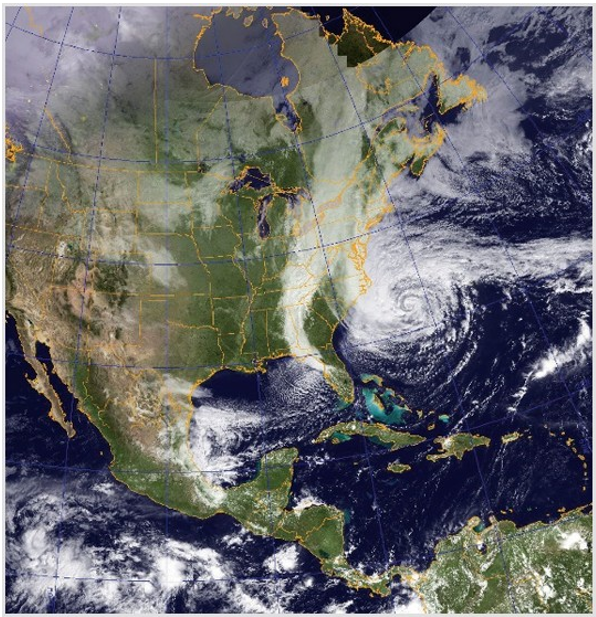Explain the main differences between mid-latitude cyclones and tropical cyclones.
What will be an ideal response?
Answer:
The main differences between mid-latitude cyclones and tropical cyclones are as follow
1. the tropic cyclones cyclones are large stroms which originate in the tropic with sustained wind more than 74 mph . whereas the mid-latitude cyclone is a larger storm that create in the middle and high latitudes
2. A tropical cyclone gets its energy from the warm water in the tropical area from latent heat of condensation . on the other hand mid latitude cyclone gets its energy from the horizontal temperature changes such as cold front passing over an area.
3. If we look at a cross section of a tropical cyclone , then we can see that a centralized column of air which is warm from the surface lifts upwards. Therefore it also known as warm-core lows . on the other hand , mid latitude cyclone (MLC) are cold-core lows that will intensify with increasing height.
4. A tropical cyclone usually contain an eye which is where sinking air occurs . whereas MLC’s have centers where air rises .
5. Tropical wind is strongest at surface whereas strongest wind created by MLC are aloft which commonly found in jet stream.
Example of tropical cyclone is Hurricane ( it is solely a northern hemisphere storm called Hurricane in the atlantic Caribbean and northeastern pacific )
Example of MLC
Over the pacific ocean mid latitude cyclone moving from west to east towards California
You might also like to view...
Considering the history of Hurricane Sandy, what happened to the hurricane following the event shown in this image?

A) It turned eastward across the Atlantic Ocean, sparing the land
B) It collided with a storm system coming eastward across the continent
C) It turned south and caused damage in the Caribbean
D) It turned southwest and caused damage to Florida
Which of the following statements is true about population dynamics in Northern Africa?
A. Populations are growing slowly. B. Tunisia began reducing population growth shortly after independence. C. Polygamy is permitted in all the countries. D. All the countries have large numbers of elderly in their populations today.
An air mass is a large region of air, typically hundreds or thousands of square kilometers, with relatively uniform characteristics of temperature and humidity
Indicate whether the statement is true or false.
What laws has the federal government adopted to control solid-waste disposal?
What will be an ideal response?